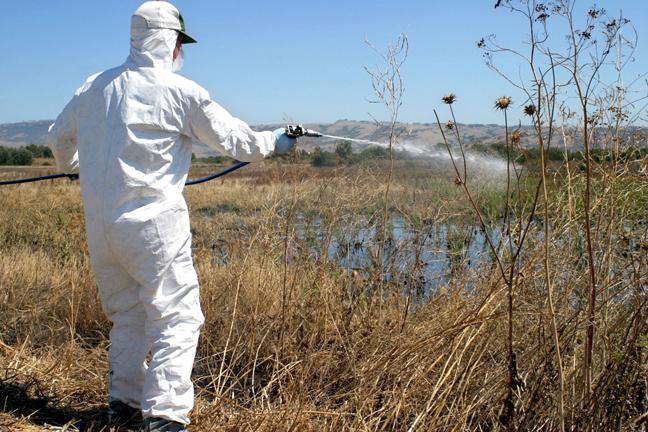Mosquito abatement district approved by voters
Mosquitoes should be a bit more scarce in San Benito County by
next year since property owners approved a mail-in ballot measure
to create a mosquito abatement district throughout the most
highly-populated areas in the county.
Mosquito abatement district approved by voters
Mosquitoes should be a bit more scarce in San Benito County by next year since property owners approved a mail-in ballot measure to create a mosquito abatement district throughout the most highly-populated areas in the county.
The ballot measure, which will add $9.80 on the county tax bill for most single-family home owners – and could be up to $200-300 for those who own larger acreages of land – was approved with 63 percent of the weighted vote.
“One guy told me his assessment was a lot more than $9.80 and the reason he voted was that over the last 30 years with Prop. 13, he’s come out way ahead,” said Paul Matulich, the agricultural commissioner. “He said he would feel bad if someone got sick from West Nile Virus [if he had voted against the measure].”
With the new funding – which will be collected for the first time in December – the county has approved a full-time vector control technician.
“He will be chasing around, doing mosquito work,” Matulich said.
“Last week alone we had two or three complaints about swimming pools and fish ponds being neglected.”
While West Nile Virus has been the driving force behind the set-up of mosquito abatement programs statewide, there are other reasons to worry about the bugs.
“Mosquitoes are carriers of other diseases,” said Kathy Flores, director of the Health and Human Services Agency. “They are the biggest vector on the planet.”
Other illnesses they can carry include malaria, dengue fever, yellow fever and encephalitis.
The full-time position in the agricultural department will allow the technician to continue his work through the winter in surveying mosquito populations.
“In winter, we will update documentation and records,” Matulich said.
Since Governor Arnold Schwarzenegger announced that all California counties must have a mosquito abatement program – and then pulled state grant funding – the County board of supervisors and staff from county departments had been working to come up with a funding source for the services. A West Nile Virus Task Force was formed.
“The Board [of Supervisors] was usually really good at following our recommendations of what to do and what the next step would be,” Matulich said, citing Supervisors Reb Monaco and Anthony Botelho as especially supportive.
Had the abatement district not been approved, money to fund a program would have come from the general fund.
“The general fund is the least available [fund] in the county budget,” said Susan Thompson, the county administrative officer, in May when the ballots were first mailed to property owners. “When it is the least available, it is pulled in many directions.”
In addition to covering the cost of a full-time vector technician, money from the district assessment will go to fund public education and outreach, and to pay back the general fund for the cost of the mail-in ballot measure.
After nearly two years of surveying and working with consultants, mail-in ballots were sent out to 13,400 property owners in San Benito County May 8.
By the close of the voting period – 45 days later – 29 percent of the ballots had been returned. The ballots were weighted so that larger property owners yes or no votes had a higher value than single-family property owners. One concern some voters expressed was that the county staff had voting rights on property owned by the county, which they felt could unfairly skew the results in favor of the district.
In the end, Matulich said, without votes from the county, the measure would have still passed with 55 percent in favor of the district.
“Thanks to the taxpayers who have seen the health and safety issue and voted for it,” Matulich said. “Without them, it wouldn’t have gone through.”










